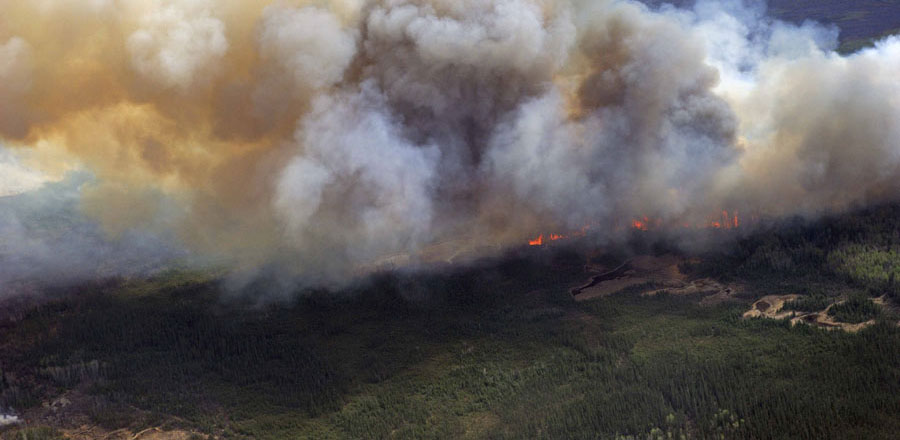
The power industry is developing rapidly. The South Hami-Zhengzhou +-800 kv UHVDC Transmission Project, Xinjiang's first UHVDC transmission channel sending electricity out of Xinjiang, was put into operation in 2010, and the building of the supporting power projects of the Zhundong-Huadong +-1100 kv UHVDC Transmission Project has started. Xinjiang's 110 kv and 220 kv grids were connected to the 750 kv higher-grade trunk grid. In 2014, Xinjiang had installed power-generating capacity of 55 million kw, and produced 209 billion kwh of electricity. It sent 17.5 billion kwh to other parts of China through transmission lines totaling 65,656 km. The installed capacity using new energy made up 20 percent of the total. A pattern of power generation with thermal power as the mainstay and other forms of power like hydro power, wind power, gas power, photovoltaic power and biomass power in support, has taken shape.
Xinjiang has become an information society. Six decades ago telegrams and postwere mainly carried by animals. Now, its communications industry has entered the modern information era. There is Internet coverage across most of the region. In 2014, broadband user numbers exceeded 3million, and there were 91mobile phones per 100 people. Around 98 percent of villages had phone line connections and 97 percent of administrative villages had broadband connections. Xinjiang has invested great efforts in raising the status of Urumqi as a regional inward and outward hub in international telecommunication services. Its voice and data services have cross-border connections with more than ten foreign countries, and are able to connect international call services to the whole of the country.
Solid progress has been made in opening up to the outside world. Since 1978, Xinjiang, with state approval, has created 17 first-class ports and 12 second-class ports, in addition to successfully holding 19 Urumqi Foreign Economic Relations and Trade Fairs and four China-Eurasia Expos. It has set up two national economic development zones in Kashi and Khorgos, and the International Center for Cross-Border Cooperation between China and Kazakhstan in Khorgos. Now, there are in Xinjiang 23 state-class industrial clusters. It trades with 186 countries and regions. A new pattern of all-round opening up has taken shape in the region. The value of Xinjiang's combined imports and exports grew from US$51 million in 1955 to almost US$27.7 billion in 2014, averaging an annual growth rate of 11.3 percent. Between 2009 and 2014, applied foreign investment grew at an annual rate of over 12 percent, the volumes of overseas contract business increased by an annual average of 26 percent, and investment outside China went up by an annual average of 25 percent.
The driving force of scientific and technological innovation has remarkably increased in Xinjiang's socio-economic development. Since its founding, Xinjiang has experienced constant increases in its financial input in science and technology, in the size of staff in scientific work, in the variety research platforms and in the number of research achievements, which have gradually led to the establishment of a system of scientific and technological innovation with distinct regional characteristics. The contribution made by scientific and technological progress to the development of agriculture has increased year by year, and improved crop varieties make up over 90 percent of total output. Industrial technology and new and high technology are developing rapidly. Xinjiang leads the country in railway traction transformer technologies, solar and wind power equipment research and manufacturing, and information processing in ethnic minority languages. It has made major technological breakthroughs in the field of resources and environment technology, discovering the petroleum and natural gas reserves in the Tarim Basin. The technologies used in the Tarim Desert Highway and Shelter Forest Project meet the highest international advanced standards.
Steady progress has been made in environmental protection. The ecological system in Xinjiang is extremely fragile, with very limited environmental capacity. Oases account for only 5 percent of the region's total area. Over the past 60 years, and especially since 2010, Xinjiang has made ecological and environmental protection a top priority, insisting on sustainable development of resources and the eco-environment. It has devoted great efforts to protecting and building its ecological system, carefully balancing the interests of economic growth and environmental protection.
Xinjiang protects its environment in accordance with the law. It has drawn up detailed plans and regulations first to protect the environment. It enacted the Zoning Program of Major Functional Areas of Xinjiang Uygur Autonomous Region, and amended or issued a series of local regulations, including the Regulations of Xinjiang Uygur Autonomous Region on Environmental Protection, Regulations of Xinjiang Uygur Autonomous Region on Environmental Protection in the Development of Coal, Petroleum and Natural Gas, Regulations of the Xinjiang Autonomous Region on Wetland Conservation of the Autonomous Region, and Regulations of Urumqi City on Air Pollution Prevention and Control. It now has 31 natural reserves of various kinds at or above the autonomous region level, 18 scenic spots, 52 forest parks, nine geoparks, one world natural heritage site, and 16 wetland parks. Fifty-four percent of its wetland areas are under protection, higher than the national average of 43 percent.
Xinjiang has intensified efforts in ecological and environmental protection programs. Since 2010, Xinjiang has planted or protected over 2,500,000 mu (166,667 ha) of forests by restricting access to mountain areas. Its total forest area and forest stock rank 14th and 12th in China. Now, belts of shelter-forests built to protect farmlands in all of Xinjiang's 82 counties and county-level cities have merged to form a network, 45 counties and county-level cities have reached the national standards in plains afforestation, and 95 percent of farmlands are effectively protected by the shelter-forests. The forest coverage in oases has risen from 15 percent to 23.5 percent, and a total of 3,258,000 mu (217,200 ha) of farmland has been returned to forest. Major projects for ecological protection have been launched, such as the Million Ecological Economic Forest Project in Ili Valley and the Project for Prevention and Control of Desertification around Tarim Basin, restoring a total of 24.6 million (1.64 million ha) of degraded lands and enclosing 51.6 million (3.4 million ha) of grassland to prevent grazing. It has curbed water and soil erosion over more than 4,000 sq km of small river valleys. The Comprehensive Reclamation Project of Tarim River Valley has provided emergency water supplies to its lower reaches on 15 occasions, gradually restoring prosperity there. In 2014, water quality was good in 94 percent of major rivers and 67.8 percent of lakes and reservoirs, as compared to 88.3 percent and 43.3 percent in 2009. This is much higher than the national average level.
Xinjiang has put in a lot of work to tackle pollution. Joint prevention and control of air pollution has been carried out in areas like Urumqi and Kuytun-Dushanzi-Wusu. There has been a considerable improvement in the air quality of the regional capital, Urumqi. During 2014, the city had 310 days with good air quality, the best ever for 20 years. Xinjiang has piloted environmental protection in some lakes with good water quality, such as Bosten Lake, Sayram Lake, Ulungur Lake and Kanas Lake. In order to safeguard drinking water, it has made great efforts to protect 367 centralized drinking water source areas, and comprehensively improved the habitat of 1,836 villages. Xinjiang encourages ecological progress through examples. It has built up two national model cities for environmental protection, 43 national-level eco-friendly prefectures, towns and villages, and 1,057 autonomous region-level eco-friendly prefectures, towns and villages.













